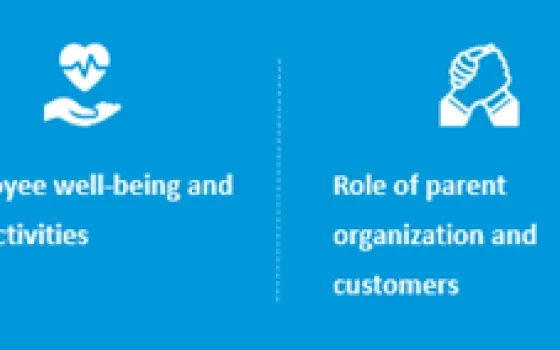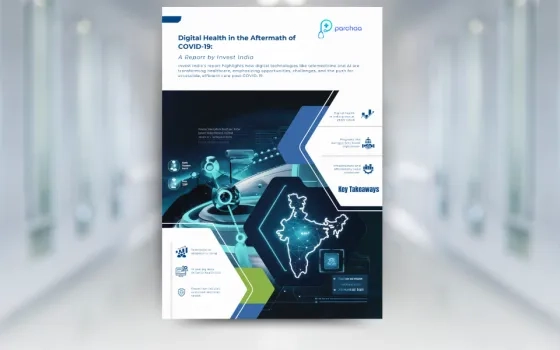The Covid pandemic has drastically impacted the organisations and businesses. While combating the virus, the ER&D industry’s topmost priorities have been its people’s safety and providing support to the health infrastructure. Discussions on return to work were planned in early March, however now things have changed.
Industry leaders are balancing the twin needs of employee care and client-first centricity, while riding strong on agile BCP implementations. NASSCOM has engaged industry leaders through the CXO Round Table chats in an effort to get a realistic view from leaders on the possible impact on the nation, including global perception and the ER&D sector in particular.
Following are the key highlights from various roundtable sessions conducted by NASSCOM with various ER&D CXOs in May-June 2021
The discussion has been tailored towards four main topics.

Q- How has Covid impacted the ER&D organisations in India and the overall business continuity plans
From the various interviews conducted, many insights were drawn –
- Project schedules continue to run on time – Schedules of ongoing projects in India have not been impacted even when India was heavily impacted by the second phase of Covid. To effectively monitor project delays and take corrective action, companies have continued to conduct risk tracking of ongoing projects on a regular basis.
- Empathetic customers - Customer confidence on Indian teams has been very high. In fact, the customers have been working together with the teams to ensure achievement of project milestones. For some companies, customer confidence even went up 10% in Nov-Dec 2020.
- Going Digital – Amongst the CXOs that were interviewed, the companies were able to go completely digital between 2-8 weeks after they started working from home. Companies provided “work from anywhere” option and allowances to set up home offices to their employees. Maintaining IT infrastructure and cyber security continued to be the focus of the companies as work from home continues for many organisations.
- Proactive sharing of Business Continuity Plans– The BCPs are being proactively shared with the HQ and the customers. Companies are also formulating return to work policies for their employees while the vaccination programs get completed.
Q- What initiatives are being taken by companies for the welfare of their employees?
Various companies, whether the GCCs, the service providers or the suppliers, are all taking many initiatives to ensure not only the physical but also the mental well-being of their employees.
- Robust system – Companies provided robust systems for employee welfare amidst the second wave of Covid. These included voluntary teams and covid related helplines, arrangement of hospital beds and oxygen concentrators, vaccination drives for employees and family members, insurance top ups, covid care holidays, endowment funds for widows and living relatives of deceased employees etc.
- Top priority given to the mental and physical well-being of employees – Companies tied up with hospitals and arranged dedicated sessions with doctors, psychiatrists, yoga instructors etc. They ensured that overtime, extra work, additional meetings were avoided and prevented burnouts while the employees were grappling with illnesses.
- Communication – Companies focused on clear communication with their employees. This also included coaching the first line managers to answer employees’ questions. Leaders from headquarters as well as India heads conducted regular townhalls, Ask Me Anything (AMA) sessions, and other sessions to motivate their employees. They also used technology to celebrate milestones and virtual happy hours.
- Matrices measured - Two matrices were being monitored by the companies – absenteeism rates and vaccinations rates among employees so that extra resources can be brought in case of any issues.
- Redefining roles and back to office policy to be planned – Companies are exploring various models to ensure that the employees are able to safely come back to office. These may include hybrid models of work to allow flexibility, classification of roles etc., which are being shared proactively to build confidence among the employees.
Q- What has been the role of the parent organisations and how have they supported their Indian entities during the pandemic, especially during the second wave?
In addition to the initiatives taken by the Indian entities, the parent organisations and headquarters have also ensured that they provide support to their Indian colleagues and team members. Some of the initiatives include –
- Support from Parent organisations – The parent organisation continued to support and empathise with the India teams and projects in India. Inspite of the country grappling with the pandemic and the effects of the second wave, new hiring continued as did the future projects which were planned pre-pandemic. Urgent projects which had to be prioritised were offered support from other locations, while Indian teams were grappling with Covid. In addition, the customers too have been supportive and collaborative to ensure timely deliveries of the projects.
- India story intact - As per the insights derived from the interviews, even during the second phase of covid, the parent organisations have continued to bet on India and never doubted their talent and resilience to bounce back and manage the crisis. In some cases, India project budget even increased by 8-10%. New hiring has also continued. Indian entities have managed to balance the empathy, employee health and well-being, and business continuity well and earned the respect and support of the HQs. The parent companies as well as the Indian entities continue to maintain a very bullish future outlook on India.
Q – What are the companies doing with respect to future scenario planning and future proofing their companies in this VUCA world?
While the companies have taken many initiatives to help their employees as well as smoothen their business continuity plans, they have also been planning on how to future proof their organisations and plan for any contingencies.
- Future preparedness – The future is uncertain. Companies are focusing on future preparedness and building healthcare systems. Work-from-office policies are being formulated once the employees get fully vaccinated, hence de-risking any unknowns. Companies are exploring various work models. Priority is being given to full vaccinations of employees and their family members. Business continuity plans are being shared actively with the parent organisations and the employees and customers.
- Training of managers is being done to ensure that productivity does not suffer while employees continue to work from home for extended periods of time.
- Transparent communication – Companies are being extremely proactive in providing transparent communication to connect with customers and employees.
- Focus on fundamentals – Companies continue to focus on the fundamental of India and the reasons why they chose to invest in the country, and this includes talent pool availability, legal infrastructure, language capabilities, cost effectiveness, common culture, flexibility of Indian mindset etc.
Demonstrate success stories – Companies continue to share success stories about resilient India and motivating stories emerging out of ER&D industry. India continues to remain the innovation hub and destination of choice for innovation for the ER&D industry.
The entire world has been shaken by this pandemic. Indian ER&D industry has shown resilience during the second wave of Covid pandemic and has scaled the remote way of working. The entire industry has come together and worked together to not only safeguard their employee base but also take care of the ecosystem. Various arrangements have been made by the companies to work from home and even move testing remotely in some cases to smoothly carry out the projects. The parent companies have continued to engage with all employees.
What is needed now is to share stories of resilient and bullish India. The entire ER&D industry, which has largely involved physical presence of its teams onsite, has fought together and is now creating policies to ensure smooth transition to office once it is safe to do so. A carefully crafted, factually correct outlook must be presented to boost confidence of parent companies, employees as well as the customers. Vaccination is the silver bullet and companies must share their vaccination stories and figures. Though the future is unknown and volatile, but by working together and vaccinating together, we can all tide through these uncertain times.





















